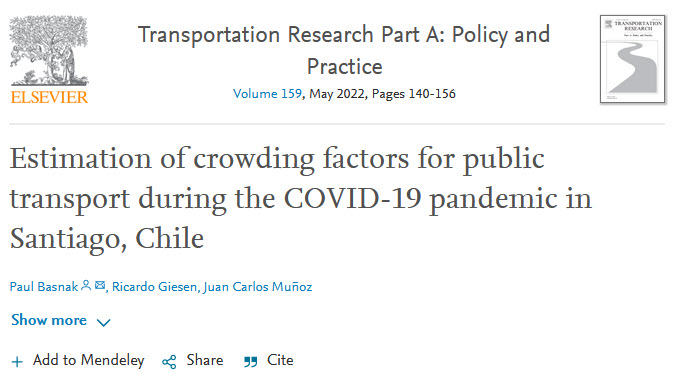PaulBasnak, RicardoGiesen, Juan CarlosMuñoz

Abstract
A sharp decrease in public transport demand has been observed during the COVID-19 pandemic around the world. In this context, it is relevant to understand how mode preferences have changed since the surge of COVID-19.
In order to better understand how the pandemic changed mode choice, particularly regarding the impact of crowding and face mask use in public transport, we conducted a stated preference on-line and on-street survey in Santiago, Chile. Our sample is balanced in gender but has a higher proportion of individuals with college degrees and those under 45 years of age than the population of Santiago.
The data collected was then used to estimate two multinomial mode choice models, a latent class model and a mixed logit model with latent variables.
The models yielded a value of travel time in crowded conditions (4 pax/m2) and low face mask use (50%) of 3.0–5.1 times higher than the case with low crowding (0.5 pax/m2) and 100% face mask use. Moreover, women tend to be more sensitive than men to the use of face masks in public transport. Besides, young and low-income people are relatively less sensitive to crowding.
The crowding penalization obtained is higher than in pre-pandemic models calibrated for Santiago for similar passenger densities. Also, as we expected, it grows non-linearly with passenger density. Disinfection of vehicles, as well as the perception of health risk, cleanliness, safety and comfort, were also relevant in explaining mode choice. Further research shall discuss how the change of mode preferences together with new demand patterns influence the operational design of public transport services.